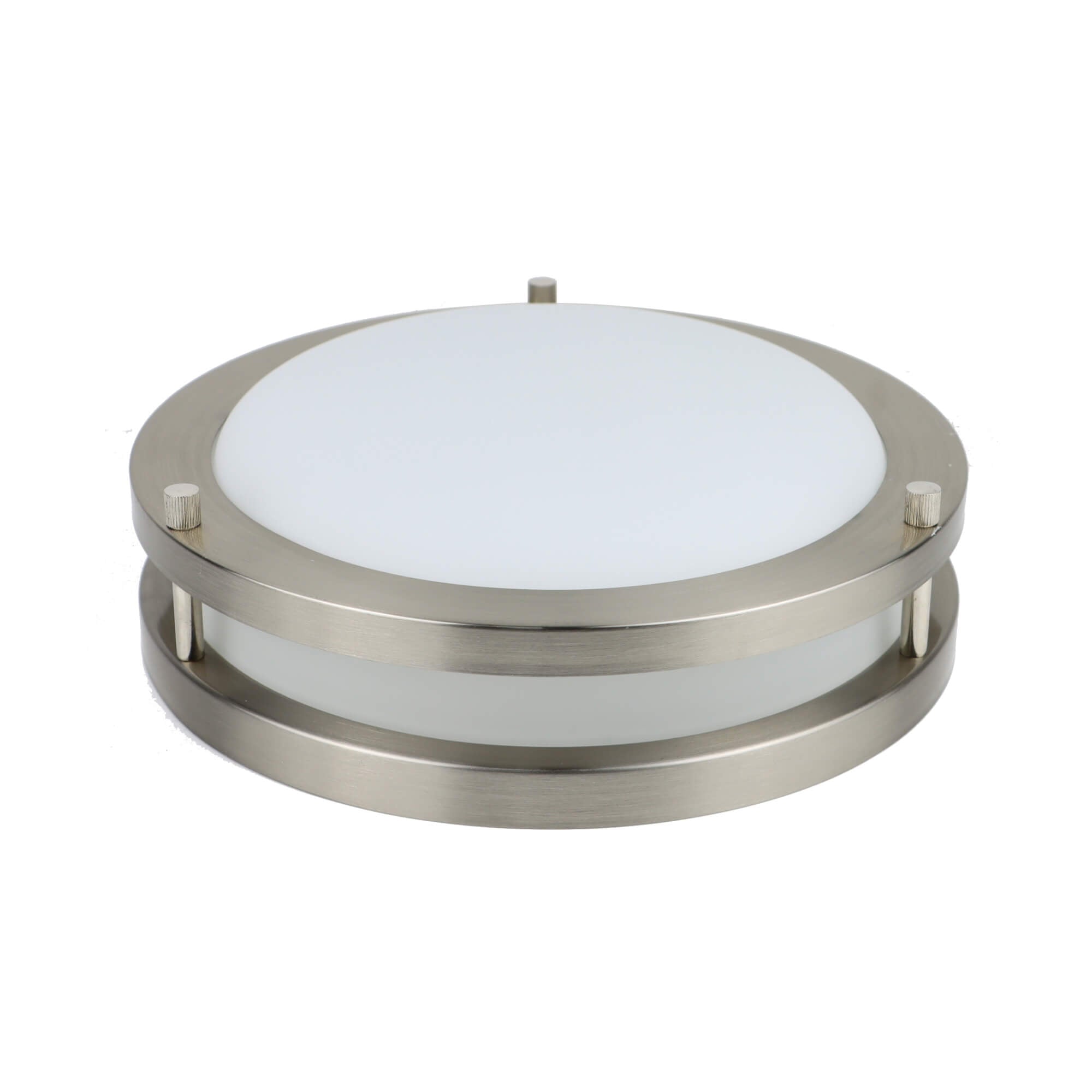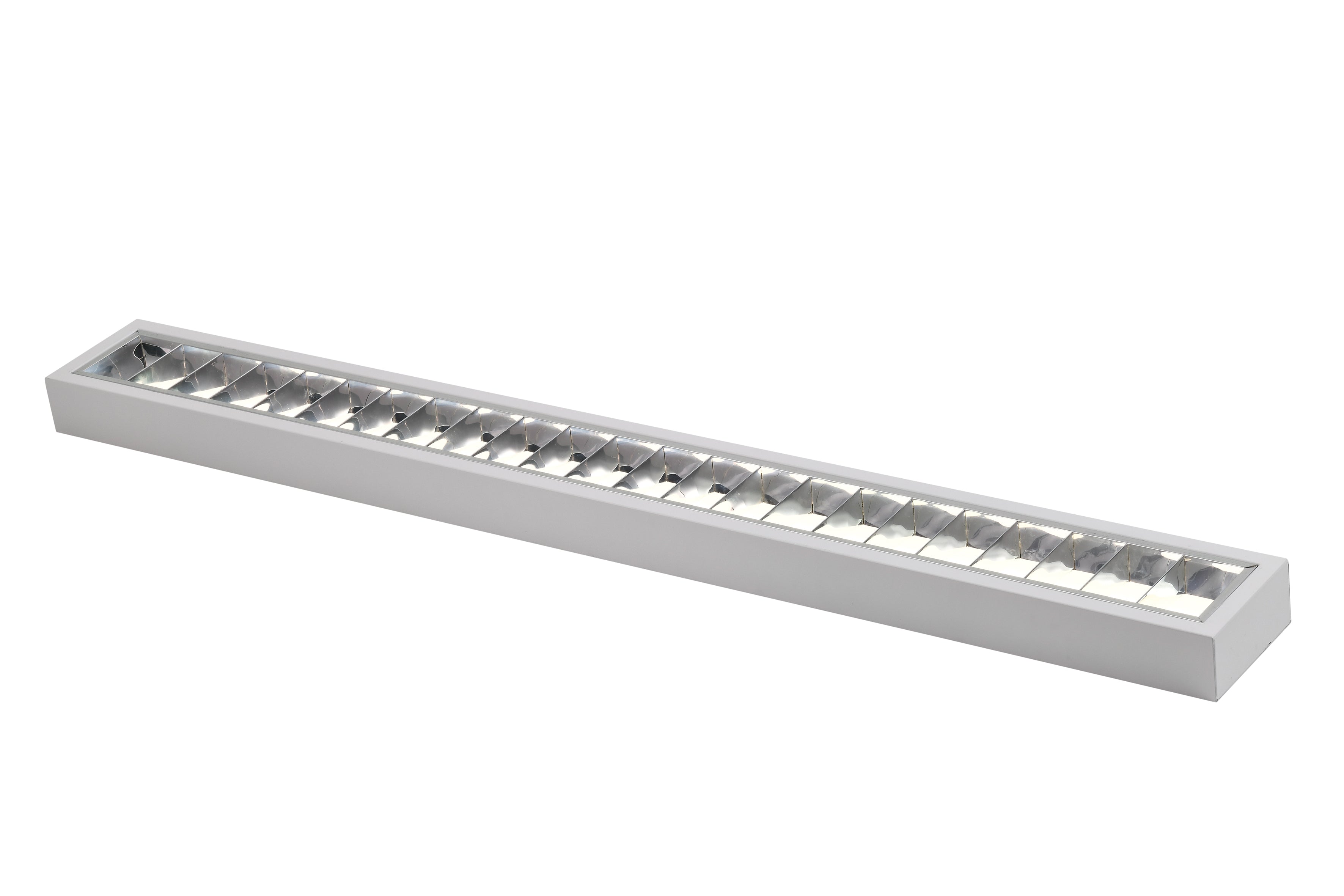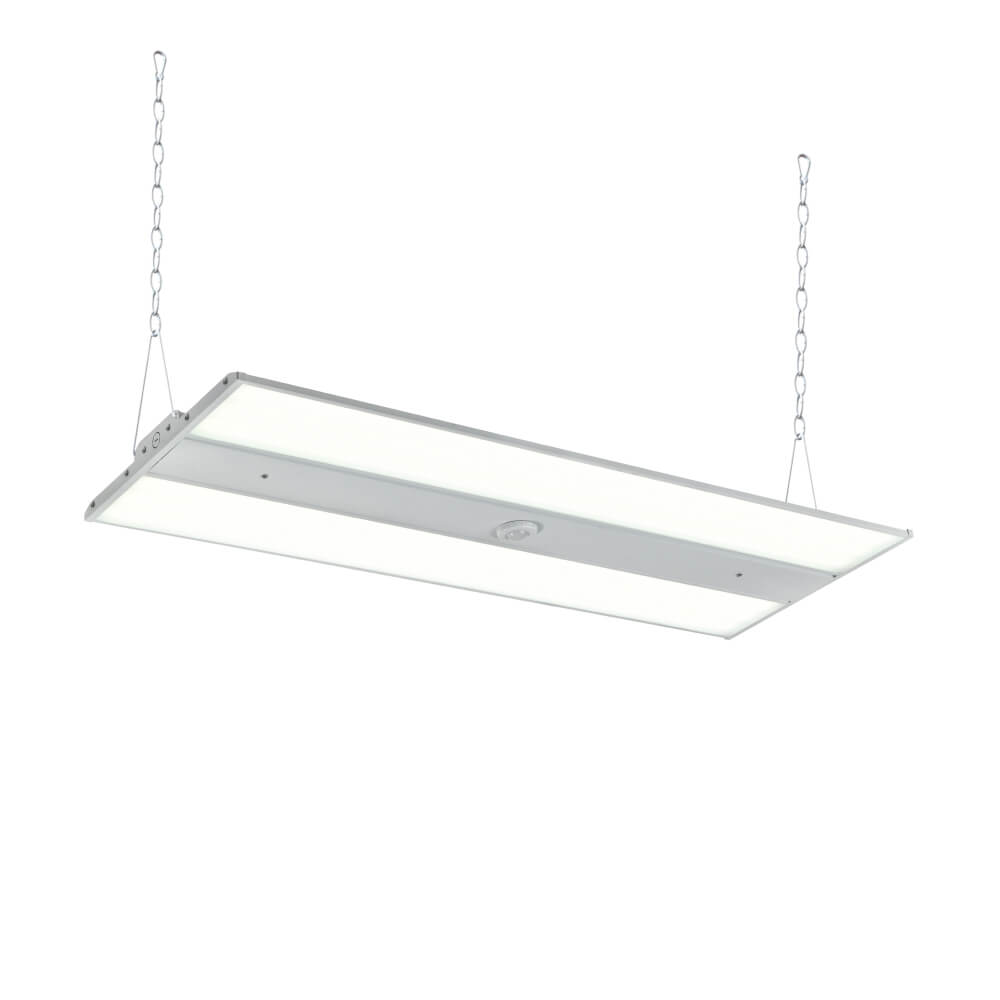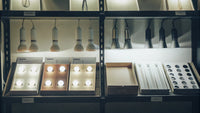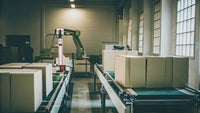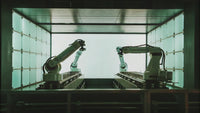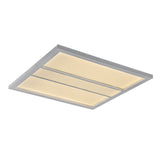Trade Show Lighting 101: The Essential Guide to Choosing and Using LEDs
Lighting can make or break the atmosphere of a trade show. It's the silent salesperson who can highlight your products, create an inviting environment for attendees, and even save you money in the long run. As we step into the vibrant world of trade shows, it's crucial to understand the role lighting plays.
In this "Trade Show Lighting 101" guide, we'll shine a light on one of the most efficient and popular lighting options available today: LED lights. From their unmatched energy efficiency to their impressive lifespan, we'll explore what makes LEDs the go-to choice for illuminators in the bustling trade show circuit.
What Are the Advantages of Using LED Lights in Trade Shows?
LED lights offer trade show exhibitors a range of benefits that clearly set them apart from traditional lighting options. Let's explore some of the key reasons to use LEDs for your next trade show.
Energy Efficiency and Cost Savings
One of the biggest advantages of LEDs is dramatically lower power consumption. LEDs convert over 80% of energy into light vs only 10-20% efficiency for incandescents. This allows exhibitors to light their booths brightly using a fraction of the electricity.
Over the course of a multi-day trade show, the energy savings add up to substantial cost reductions. Exhibitors can save hundreds of dollars per show on electricity bills over the lifespan of the LED fixtures. The return on investment from lower operating expenses can offset a large portion of the initial LED purchase cost.
Longevity and Durability for Frequent Use
With exceptionally long lifespans from 25,000-100,000 hours, LEDs are built to withstand heavy usage over years of trade shows without degradation or failure. Exhibitors can reuse the lighting reliably for multiple events without maintenance headaches or replacement costs.
The solid-state design also makes LEDs far more durable and impact-resistant than fragile incandescent bulbs prone to breakage. LEDs can withstand vibrations and movement during transportation between events. This ability to reuse LED gear without surprises leads to great value over time.
Low Heat Emission for a Comfortable Booth
Incandescent and halogen lights waste energy by emitting heat, making the exhibit hall warmer and uncomfortable. LEDs produce little infrared light and radiate up to 90% less heat. Visitors feel more pleasant in cooler LED-lit booths, especially in crowded spaces.
The reduced heat also prevents damage to temperature-sensitive exhibit elements like artwork, fabrics, plastics, or fresh food samples in refrigerated cases. Heat can accelerate wear and tear, so the "cool aspect" helps exhibitor assets last longer.
How to Choose LED Lights for Trade Shows
Selecting the most suitable LED fixtures for convention center ceilings and exhibit hall environments takes into consideration placement, coverage, optics, and controls.
LED Troffers Provide General Ambient Lighting
Recessed modular LED troffers integrate cleanly into drop ceilings on a standard grid. It is worth noting that these LED troffer lights can greatly enhance the shopping experience.Their wide beam, high lumen downlight distribution shaped by internal optics makes troffers ideal for delivering soft, uniform ambient illumination critical in spaces like:
- Pre-function mingling areas
- Registration desks and queuing lanes
- Connector hallways between halls
- Cafes/lounges for reading and conversations
Many troffer models come equipped with smart sensors and emergency backup drivers to simplify operations and meet safety codes. Cool operation prevents close-proximity heat discomfort. Troffers offer an affordable ambient lighting foundation.
LED High Bay Lights for Tall Ceilings
High bay LEDs work well suspended high from structural rafters up to 40' tall in the highest venue ceilings. Different than traditional HID high bay alternatives, LED versions project intense, energy-efficient downward beams designed specifically to reach the floor effectively in large volumes with:
- Narrow spot options to cover floor hot spots
- Wide flood options for general illumination
- Lens accessories to widen optics as needed
- Durable metal finish and optics to withstand ceiling height changes
High bays keep expansive floors brightly lit for exhibitor visibility and safe navigation. Integrated motion sensors conserve power in unused areas. High CRI (90+) LEDs maintain color accuracy.
Exterior LED Flood Lights
Heavy-duty exterior-rated LED flood lights purpose-built for commercial facilities withstand weather swings from blistering heat to freezing rain. This sturdy construction casts ultra long-throw illumination onto critical outdoor spaces to facilitate safe attendee access, navigation, and security including:
- Main entranceways
- Outdoor terraces used for events
- Smoking lounges
- External fire exits and pathways
- Vendor loading bays
Powerful directional beams reach up to 600' from single mounts. Floods strategically cover access choke points and direct foot traffic efficiently 24/7 regardless of conditions.
Flexible LED Light Bars
Interlocking modular LED light bars connect seamlessly end-to-end with power cables to build stunning custom exact-fit installations defining key zones and safe aisles. Unique advantages of flexible light bars include:
- Outlining trade show booths from above
- Marking wide passenger queuing paths
- Contouring around venue architecture
- Linking straight and curved runs for any layout
- Adjusting onsite as needed
Light bars prove invaluable for event planners needing adaptable supplemental accent lighting. Bars reconfigure easier than bulky strips for evolving floorplans. Durable PCB construction and lens covers protect against exhibit dings.
Carefully evaluate beam shape, width, and intensity options when choosing LEDs for seamless large-area coverage. Prioritize durable, enclosed fixtures suited for convention rigor. Consider mixing ambient, accent, and architectural light types.
Fine-Tuning Light Color and Brightness for Trade Show Venues
When evaluating LED technology for trade shows and large public event space illumination, consider beam shape, width, and intensity for achieving comfortable atmospheres.
Factor in Kelvin Color Temperatures
The concept of color temperature measures how "warm" or "cool" white light appears, using degrees Kelvin.
Consider these guidelines when selecting color temperature:
- Lower 2700-3000K emit a warmer, reddish-amber tone like vintage bulbs
- Crisper 5000-6500K LEDs match neutral daylight with clean blue hues
- For the most flattering illumination spanning convention venue interiors and outdoor pre-function areas, target flexible 5000K
- Avoid under-lit dim and shadowy effects below 3500K
- But also overpowering clinical blue-tinged light above 5500K
- Visitor comfort and merchandise display depend on apt color rendition
Key Benefits of 5000K:
- Close replication of natural outdoor settings
- Balanced contrast and vividness
- Visual clarity without eye fatigue
- Flexible for most decors and booth color palettes
- Subtly accentuates room architecture
Calculate Adequate Trade Show Lumen Intensity
- The brightness and spread of LED fixture beams get tallied in lumens.
- When calculating the required luminosity consider:
- Room dimensions - height, width, seating capacity
- Ceiling height and existing ambient daylight
- Surface reflectivity and finishes
- Viewing use cases - exhibits, fashion shows, screens
General Lumens Guidelines:
- Exceed drab office building light levels
- For open trade show floors, specify 10,000+ lumens
- Measure uniformity ratios during planning
- Transition aisle/seating areas to lower-fill lighting
- Avoid glaring hot spots and dark voids
Ultimately, specific considerations around color rendering and illumination intensity directly impact the overall lighting ambience for any venue and their guests. By evaluating the individual needs and intended purposes of dedicated trade show spaces, designers can select the best-suited LED fixture specifications to truly set the proper visual tone that both accentuates and comforts.
Trade Show Lighting Investments - Short Term Cost vs Long Term Payoff
Budget-conscious exhibitors balance affordability with long-term value when investing in LED lighting. Analyze both short and long-term costs for smarter spending.
Balancing Initial Costs vs Long-Term Savings
Upfront, LED lighting entails higher purchasing costs than basic incandescent bulbs. But greatly reduced energy consumption and extraordinary 50,000+ hour operating life quickly offset the initial sticker price through years of continued use across countless trade shows. Consider the total cost of ownership over the full lifespan.
Work recurring trade show participation into capital expenditure budgets and lighting upgrades become quite affordable. Take advantage of rebates from local utilities rewarding the exceptional efficiency of LED tech. Calculate the ROI timeframe to recoup savings from your particular exhibit schedule.
Investing in Quality Pays Off Down the Road
As LED manufacturing scaled up substantially, low-priced imports flooded the market, some using substandard components prone to early failure despite intense durability testing. Thoroughly vet unfamiliar suppliers and check replaceable part availability for sustained operation.
While paying a bit more upfront for performance LEDs from trusted manufacturers stings less down the road than replacing cheap products that unexpectedly burn out shortly after displays end. Prioritize certified energy-efficient and ETL safety-rated models for peace of mind.
Best Practices for Using LED Lights at Trade Shows
When designing lighting plans for convention centers hosting trade shows, consider incorporating:
Suspended LED High Bay and Troffer Lights
High bay LEDs suspended from ceiling rafters work well for hitting floor marks without glare since exhibits demand brighter, shadowless downlight. Specify sturdy commercial-grade fixtures rated for conventional vibration and longevity exceeding 50,000 hours. Carefully space grids and model expected floor illumination coverage during planning, as many aging convention venues lack existing crossover beams to easily mount floods. For ancillary zones like lobbies and boothless registration areas often finished brighter, install recessed 24"x24" LED luminous ceiling troffers. Route wiring through accessible plenums for cleaner installs. Match CCT and lumens to keep transition areas adjacent to trade floors visually and technically consistent. Consider integrated occupancy and daylight harvesting sensors.
Versatile Modular LED Light Bars
Interconnecting LED light bars offer superior accent lighting flexibility and customization possibilities to help guide and define dynamic spaces. Link bars into fully contour-able runs atop upper trade show booth backwalls and exhibit dividers to outline floor spaces creatively from above and amplify visitor wayfinding. Combine straight and curved modular sections warped around central stadium architecture as aisle markers visible even when seated. Avoid permanent mounting and wire bars separately to speed reconfigurations as event layouts evolve. Bars work better than bulky strips for rapid floorplan pivots. Prioritize options with durable protective end caps, modular wiring, and quality LED chips resistant to prolonged operation and exhibit dings.
Exterior-Rated LED Floodlights
Properly covering outdoor trade show access paths, loading bays, smoking lounges, and exterior gathering areas with weatherproof illumination maintains safety and visibility during early morning vendor ingress or nighttime tear-down once interior lights dim. Analyze existing exterior structural assets like venue walls, lampposts, and parapets during planning to position supplementary heavy-duty LED floods that generate short-range cones suited to small zones without wasteful spillage into skyward atmospheres. Certify external LED devices to withstand seasonal temperature swings, precipitation, and wind alongside pedestrian circulation routes.
Conclusion
LEDs have revolutionized how exhibitors present themselves, offering a blend of cost-effectiveness, sustainability, and aesthetics. As we've discovered, LED lighting isn't just about brightening up a space-it's about setting the tone, drawing attention to your products, and creating an engaging experience for visitors. With the information provided in this essential guide, you're now equipped to select the perfect LED solutions that not only showcase your exhibits in the best light but also contribute to a successful and memorable trade show experience. Remember, good lighting could be the difference between standing out in the crowd or blending into the background. Choose wisely, shine brightly, and watch as your efforts pay off, show after show.
FAQ:
Q1: How do I determine the number of LED downlights required for a trade show hall?
A: To calculate the number of LED downlights needed for a trade show hall, you must consider the size of the space and the desired brightness (measured in lumens). As a rule of thumb, divide the area of the hall (in square feet) by the footprint each downlight covers (also in square feet). Increase the quantity based on brightness needs or to eliminate shadows.
Q2: What is the appropriate spacing for LED downlights in a trade show setting?
A: The appropriate spacing for LED downlights depends on the height of the ceiling and the beam angle of the downlights. Generally, for a standard 8-foot ceiling, placing downlights 4 to 6 feet apart provides balanced coverage. For higher ceilings, increase the distance proportionally to maintain even light distribution without creating dark spots.
Q3: What features should I look for in LED lights when selecting them for trade shows?
A: When selecting LED lights for trade shows, look for features such as adjustability (angle and intensity), color temperature options, high Color Rendering Index (CRI) for accurate color representation, energy efficiency, ease of installation, durability for transport, and the ability to be dimmable to suit varying exhibition conditions.
Q4: What's the difference between warm white and cool white LED lights, and which is best for trade shows?
A: Warm white LEDs emit a softer, yellowish hue similar to incandescent bulbs, creating a cozy atmosphere, while cool white LEDs produce a more intense, blue-white light similar to daylight, which is invigorating and excellent for attention-grabbing. The best choice depends on the mood you want to set and how you want your products to be presented.
Q5: What safety considerations should I keep in mind when using LED lighting at trade shows?
A: Safety considerations include ensuring all lighting fixtures are securely mounted to avoid accidents, using lights with proper heat dissipation to reduce fire risk, and managing cables to prevent tripping hazards. Also, verify that your LED products are certified by recognized safety standards organizations like UL or ETL.
Q6: What is the lifespan of the LED lights?
LED lights typically last longer than traditional bulbs. Check for rated lifespans, which can often exceed 50,000 hours.
Q7: Are the LED lights dimmable?
Yes, LED lights can be dimmable. Dimmable lights offer flexibility in a trade show setting, allowing you to adjust brightness levels based on the particular needs of each exhibit or time of day.
